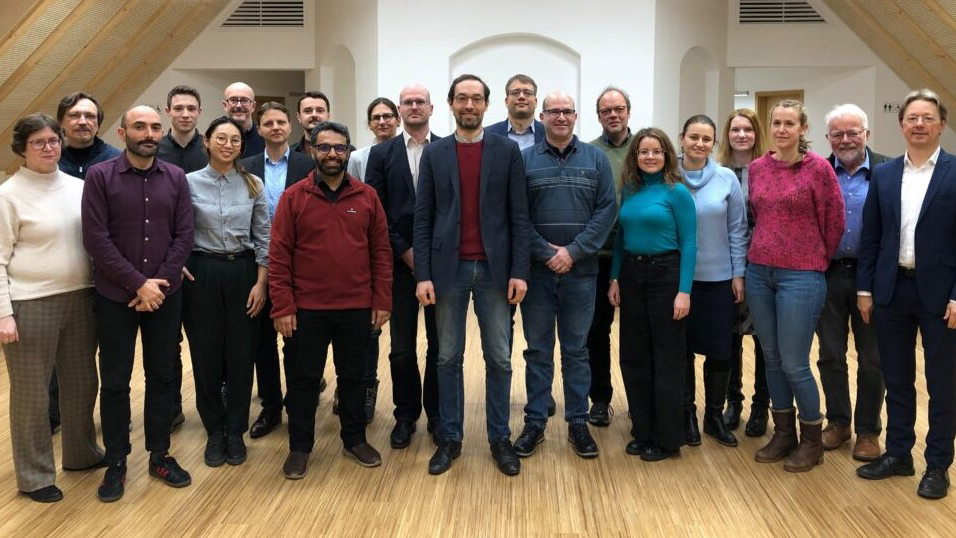The overarching aim of CirculH2 is to demonstrate the successful development of one or more highly robust and scalable hydrogenases for use of hydrogen that selectively drives biotransformations of bio-based materials to specialty and commodity chemicals in an industrial environment (TRL6). The CirculH2 project has been in existence since February 2024.
CirculH2 is a team with members from esteemed institutions like the TUM Campus Straubing (TUMCS), Delft University of Technology and the University of Zagreb, as well as industry partners including EvoEnzyme, Cascat GmbH, acib GmbH, Econutri, Axxence, AstraZeneca, Enzymicals AG, and Sustainable Momentum. The professorships und chairs of Electrobiotechnology (Prof. Dr. Nicolas Plumeré), Chemistry of Biogenic Resources (Prof. Dr. Volker Sieber) and Bioprocess Engineering (Prof. Dr. Michael Zavrel) represent the TUM Campus Straubing. The project is funded by the EU und coordinated by the Professorship of Electrobiotechnology. Together, CirculH2 brings together academic rigor and industry experience to drive innovation and address complex challenges. Our collective commitment is to make a significant impact on the world.
New possibilities for sustainable catalysis
“Our mission is to revolutionize chemical production by transitioning to renewable, energy-efficient, and recyclable resources. Our recent breakthrough in making robust and scalable hydrogenases, Nature’s highly active catalyst for H2 oxidation and H2 production opens the possibility to meet the industrial requirements in terms of compatibility with biocatalysis, circular chemistry and economic and technical competitiveness over fossil-sourced reactants”, Prof. Dr. Nicolas Plumeré says.
Modelling of the reaction processes and lifecycle assessment will deliver a full quantitative evaluation of the performances and applicability of the hydrogenase-biotransformation systems. This will provide convincing evidence for the adoption in industry. CirculH2 will deliver a scalable and robust H2-driven biotechnology compatible with the existing infrastructure that will advance European competitiveness in the sustainable and circular production of chemicals. It will minimize energy usage by having negligible resource losses and minimal downstream processing due to its highly selective hydrogenase catalysts. The CirculH2 technology aims at replacing the heavily used legacy methods of chemical production and enable decarbonization of industrial biotechnology.
CirculH2 aims to demonstrate the viability of using hydrogenases to drive biotransformations for specialty and commodity chemicals on an industrial scale. “Our goal is to minimize energy usage and resource losses, contributing to decarbonization efforts and advancing European competitiveness in sustainable chemical production”, Kelly Lim-Trinh from the professorship of Electrobiotechnology says.

